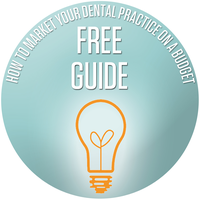The minority community faces many challenges when it comes to dental health. Oral health in the U.S. has improved over the past half-century. But it’s still a significant public health issue, and it affects low-income and minority populations in particular. When it comes to minority dental health, there are barriers to receiving care.

The Stats Don’t Lie
- 42 percent of African-American and 36 percent of Hispanic adults have untreated oral health diseases. This is compared to 22 percent of whites.
- Tooth decay for children ages two to eight is twice as high for Hispanic and African-American children, compared to white children.
- A 2018-19 oral health survey found that Native American children ages one to five are more than 4 times higher than white non-Hispanic children to have tooth decay.
- Access to insurance plays a role. According to the U.S. Census Bureau, between 2018-2020:
- 69.3 percent of all MA beneficiaries were White (versus 75.5 percent of the general Medicare population)
- 13.4 percent were Hispanic (versus 9.2 percent)
- 10.7 percent were Black (versus 10.6 percent)
- 4.0 percent were Asians or Pacific Islanders (API; versus 3.3 percent)
- 0.4 percent were American Indians or Alaska Natives (AI/AN; versus 0.5 percent)
- However, most state Medicaid dental programs don’t provide sufficient care. The average state Medicaid program allots less than two percent of its budget to dental services.
Importance of Health Literacy
Minority patients may also have challenges communicating with dental providers. In fact, up to 20 percent of Hispanics do not go to providers because of language barriers. Asians and Hispanics report difficulties with understanding written information. And, up to 40 percent of African Americans struggle with reading.
This is why health literacy is so very important. An inability to understand or communicate about health care affects people’s ability to:
- Navigate the system. This can include filling out complicated forms and finding providers and services.
- Give family history to providers, which is important for effective care.
- Manage chronic conditions
A good way to improve health literacy is to suggest patients bring a family member or friend to appointments. That person can take notes and ask questions. You should also make sure you have materials on hand that are easy to read and provides useful information. Having clear visual aids can also be very beneficial for more visual learners.
Everyone should have access to and understand dental health. Visit our New Patient Package eGuide for a collection of resources designed for you to distribute to patients when educating them on oral health Equipped with the basics of tooth anatomy, information on crowns, implants and more!



